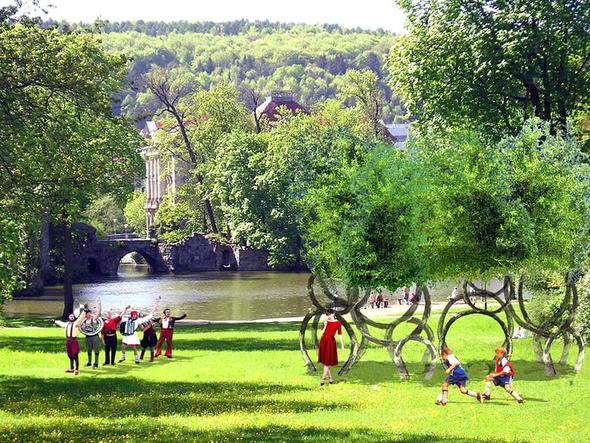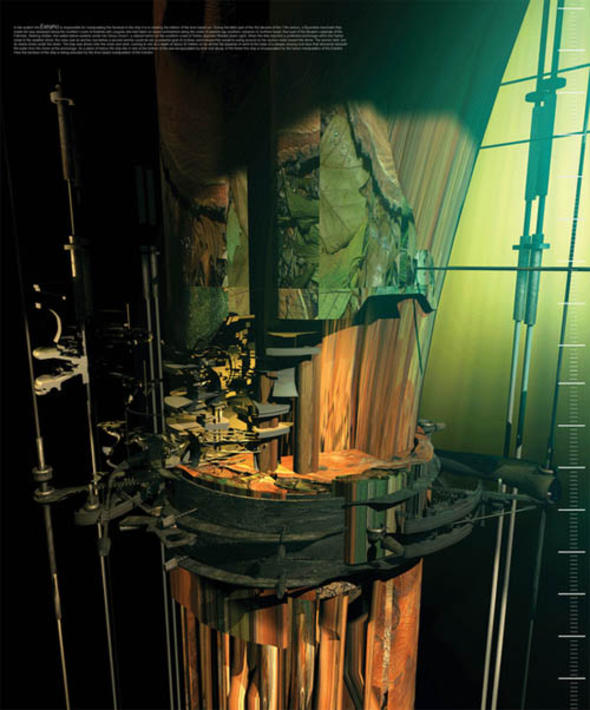
[All images above by the Bureau of Architecture, Research, and Design (BOARD). ]
A landscape always exists in an ephemeral state in comparison to most architecture. Much of its makeup often being organic, there is an expiration date unless certain remediations take place to maintain a somewhat original existence. We've discussed ways in which landscape architects might design in accordance with this natural decay, allowing projects to fade away in an intended manner, rather then employing a tireless effort to maintain a certain "pristine" condition.
In a brilliant read by Geoff Manaugh [BLDG BLOG] through CCA, the idea of a "sacred grove" is discussed and what might constitute one. Their organic nature not lasting the tests of time, much of what we think existed can only come from their depictions through poetry, paintings, and as Manaugh mentions, mint. Their intended purpose, or meaning left to the interpretation of the descriptive artwork.
As it was suggested, could it be that a certain grove held sacred was merely a utilitarian construct, planted not as an emotional or religious space but purely for timber production?


[From "Growing A Hidden Architecture" by Christian Kerrigan ]From "Growing A Hidden Architecture" by Christian Kerrigan ]
I've stumbled upon groves in the forest. After trouncing through miles of random tree placement I come upon an orthogonally ordered alignment of mature pine oddly placed in the middle of this natural growth. Clearly man made, this pine grove did possess a certain power. It might of been simply the juxtaposition of arboreal spaces, but the idea that man had long ago used and created this space, regardless of intention, was quite fascinating to me. I let my mind wonder, studying the area in my own form of landscape archeological reconnaissance.
Continuing in the article is a list of potential future sacred groves. One favorite being Christian Kerrigan's "Growing a hidden Architecture," which reminds us of the FabTreeHab, its description:
By controlling the manipulation of refined armatures, calibrating devices and designed corsets,” Kerrigan writes, “the system is capable of controlling the growth of a ship inside the forest. The ship will grow over a period of 200 years and will exist as a hidden architecture inside the trees. The ship growing in the forest is the ship from the ‘Rime of the Ancient Mariner,’ a tale of man’s relationship to mortality.” In a particularly fantastic detail, “the artificial system harvests resin from the trees to measure time passing.
Slowly growing to completion, the end of the system within the forest is signalled by the Amber Clock, the resin cycles in the trees keeping time. The armatures alter the geometries of the copse with technologies, which are spliced into the hull of the ship.

[From "Growing A Hidden Architecture" by Christian Kerrigan ]
Please read the CCA post in its entirety here.
Related: Botanical Gentrification | Arbortectual
